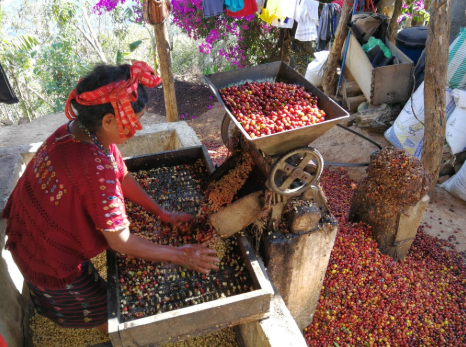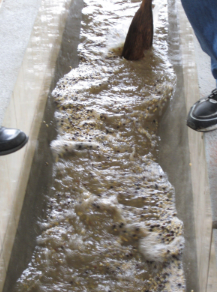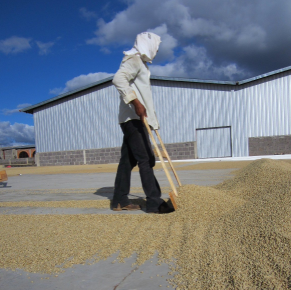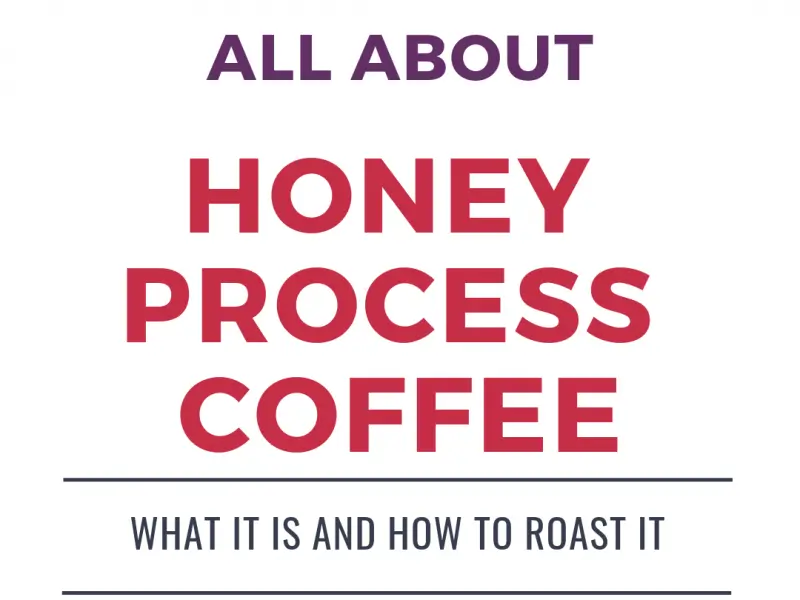Quick Answer for Why Coffee Nerds Love Washed Process Coffee
Coffee nerds love washed process coffee because it exhibits what wine nerds call terroir.
Specialty coffee enthusiasts love the flavor of washed process coffee because the processing method allows for the true flavor of the bean to shine through. You are not tasting the fermented flavors of the coffee cherry, as you would with a natural process coffee.
You are able to taste the regional characteristics of where the coffee was grown. You are able to taste the species of coffee plant the seed was picked from.
What is Washed Process coffee?
The washed process, also known as wet process, is a method of fermenting and removing the coffee seed from the coffee cherry. Because all coffee starts as a fruit, the seed must be meticulously removed from the pit of a cherry so that it can be roasted, ground, and consumed.
It’s easier to understand washed process coffee when it’s compared with its counterpart: natural/ dry process coffee. With the natural process method, a coffee cherry is picked and left to dry out with the fruit still around the seed. In the washed process, the pulp of the cherry is fermented and removed much earlier by using large vats of water to rinse away the fermented fruit.
What difference does the washed process make in terms of flavor?
Washed process coffees, because they spend little time in contact with their fermenting fruits, have a clean, clear flavor. It’s with washed process coffees that you can begin to taste subtle differences between countries of origins, and even between regions within a producing country.
Coffee cherries all generally taste the same, and with natural process coffees, you’re tasting a fair amount of the fermenting sugars associated with that coffee cherry. In washed process coffees, you’re only tasting the bean itself. The soil, weather, and climate will all stake a claim on the flavor of the coffee bean. Wine nerds call this terroir, and while coffee nerds have been reluctant to use the same word, washed process coffee offers a glimpse at the same principle.
A Brief History of Washed Process Coffee
There are several ways to remove the seed from the fruit. Because coffee is grown throughout the world from the Americas, to Africa and Indonesia, weather patterns and local tools and customs have determined how each producing origin processes their coffee.
In the 1970’s and 80’s, a fairly new method of processing coffee came about and was rewarded (with straight cash-money) for its exceptional clarity of flavor. This was washed process coffee, and it has since taken the specialty coffee world by storm.
Producing countries like Brazil and Ethiopia export some washed process coffees, but each of these origins have made a name for themselves with their naturally processed coffees. In Ethiopia, the wild berry and fruit flavors are prized, even if it’s at the expense of some clarity. In countries where there isn’t a tremendous amount of water, the natural process still reigns. It’s simply cheaper, easier, and uses less resources.
In Central America, however, the natural drying process just doesn’t cut it. Because the climate is so rainy throughout Central America, there is never a chance for the coffee cherries to ferment and dry. Rather, coffee cherries in this climate rot. Only the lowest quality coffees from Central America are naturally processed. In this way, climate has a huge effect on which method is used.
How the Washed Process Works
Washed process coffee is dried fairly quickly when compared to other methods.
First, coffee cherries are picked and then ran through a pulper. This removes the skin and pulp from the coffee cherries. The cherries still retain a sticky layer or fruit called the mucilage, though it isn’t easy to remove mechanically.

The pulped cherries are funneled into large vats filled with water where they are fermented for a short period of time, generally 24-48 hours. The water is constantly agitated and refreshed, allowing for the fermenting mucilage to break away from the seed and filter out.

After the mucilage has fermented off the seed, the seeds are drained out and left to dry on large beds. This process can go quickly, or can take weeks depending on climate and weather. The drying seeds are turned often to ensure that they don’t rot.

When the seeds are dry enough to export: around 8-14% moisture, they are bagged and shipped across the world.
Experiment: Try Different Processing Methods Back to Back
The best way to learn and understand how different processing methods affect the flavor of your coffee is to try coffees from the same origin, but processed in different ways.
It’s not easy to find green coffee processed in different ways from the same origin, but at certain times of the year, green coffee dealers will offer it. When you see this deal, jump on it. There is no quicker way to learn about the difference between washed and natural process coffee.
I’ve seen this most commonly with Ethiopian coffees. For instance, once or twice a year Sweet Maria’s will offer a Washed Ethiopian Sidamo as well as a Natural Ethiopian Sidamo. Tasting those side by side will help you understand the differences in processing methods.
What’s your favorite processing method?
To learn more about different coffee processing methods and how to choose green beans for roasting, click here.
What’s your favorite processing method? Let us know in the comments below!





1 comment